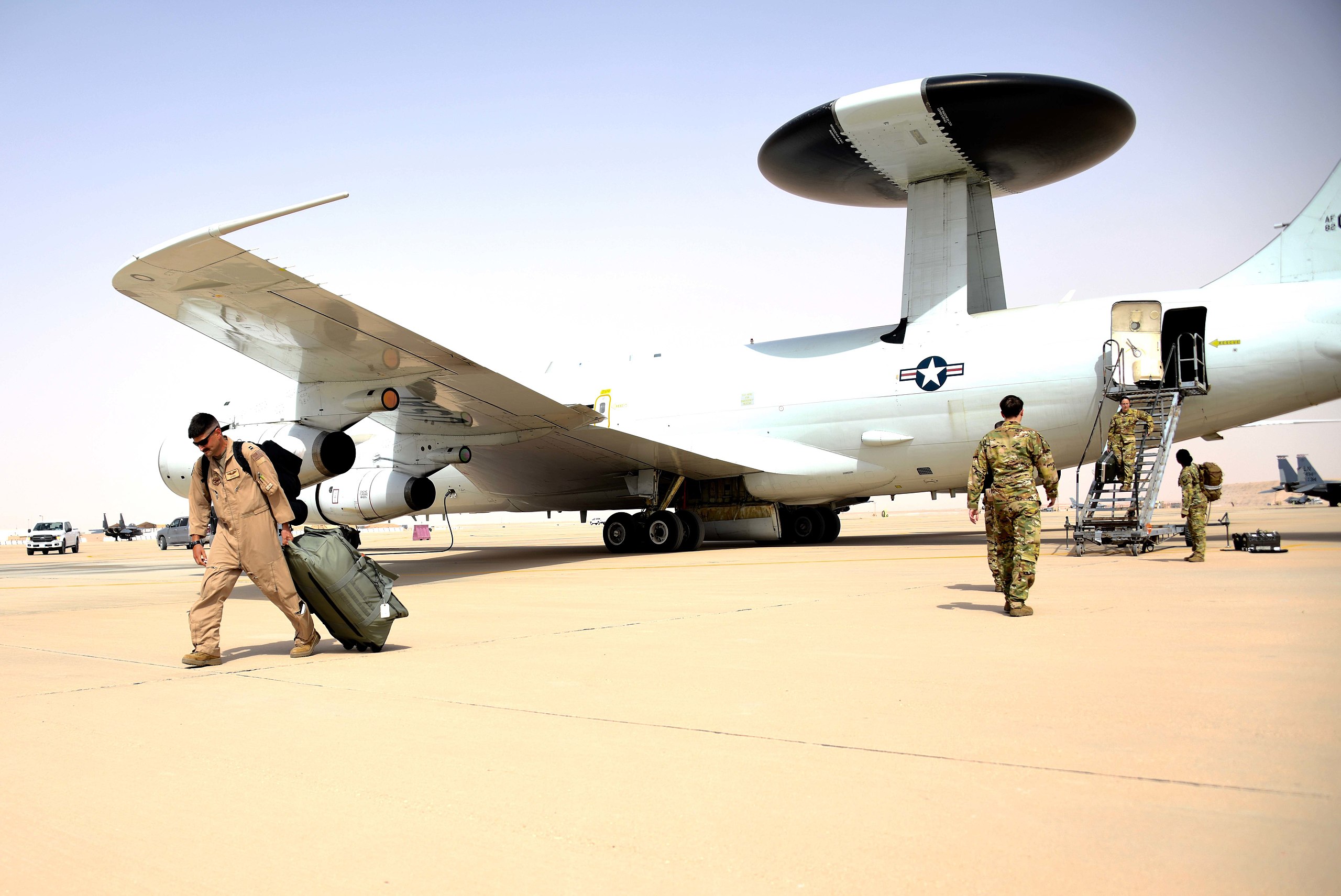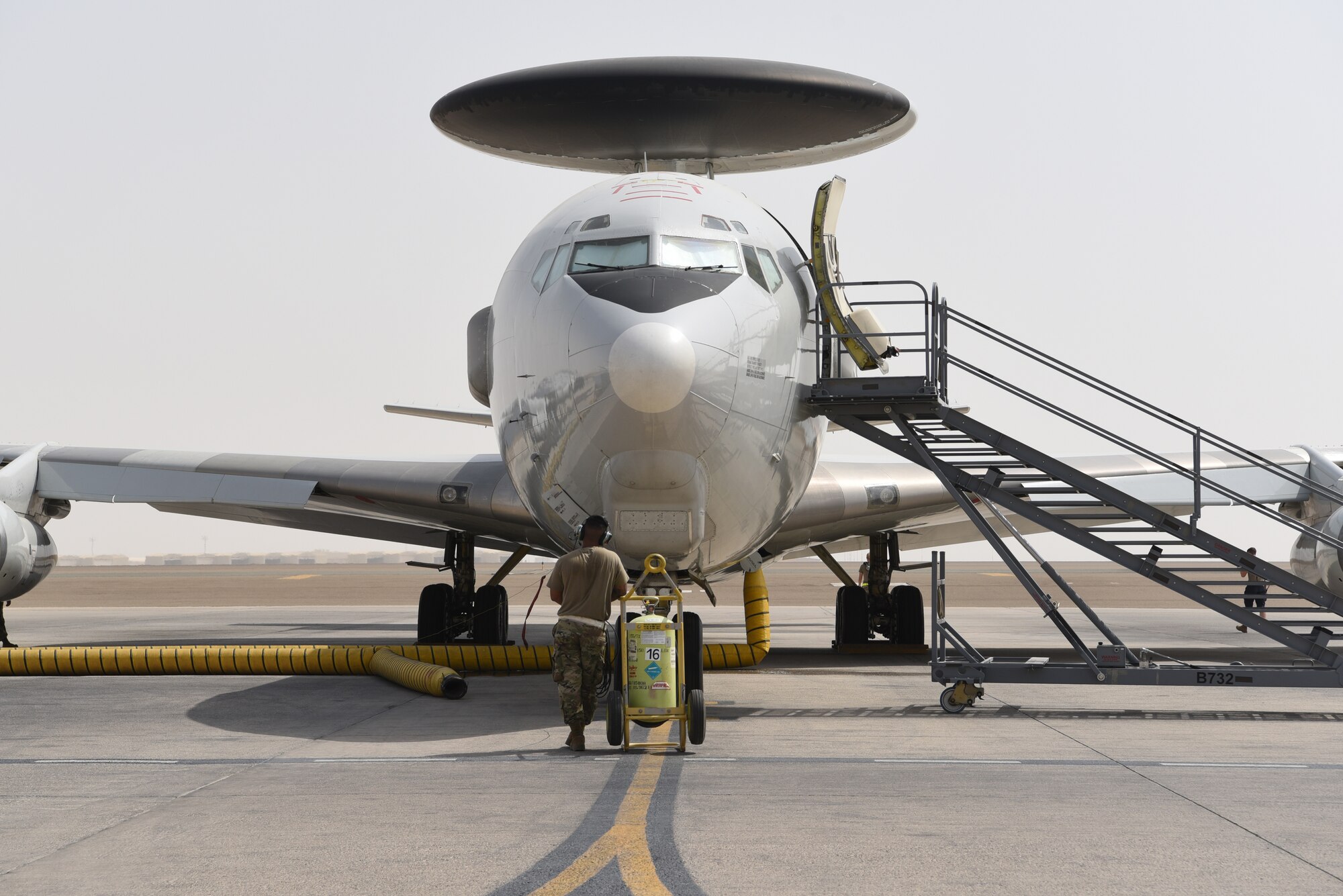The USAF formally begins searching for a replacement for its AWACS
The U.S. Air Force issued a request for information (RFI) to the industry to propose solutions for the replacement of its E-3G AWACS Airborne Warning and Control Systems.
Based on the responses obtained, the USAF will evaluate candidates and award a contract during FY 2023. The winning bidder will be required to provide two prototypes (aircraft and associated ground equipment) within five years of contract award.
To be considered by the USAF, Airborne Early Warning and Control (AEW&C) System bidders must provide detailed information on the capabilities of their equipment to see if it meets the force’s requirements.
Radar
The radar system is to be the primary means of detection of the future AWACS, which is to have the following features:
- Advanced multi-mode electronically scanning multi-mode radar, capable of scanning air and naval targets at long range
- 360° coverage, with surveillance and tracking capability with variable revisit rates and tracking updates
- Ability to maintain battlefield scanning while electronically steering radar beams to isolate targets of interest
- The manufacturer shall describe the performance and capabilities of its radar (at classified level) detailing the maximum detection range, the size of the target used for that range, and the lowest altitude at which that object is observable on the radar horizon. The atmospheric and meteorological conditions used in their evaluation should be specified
- They should also provide information on the range of frequencies (classified and unclassified) in which the radar operates and how it is expected to perform against existing and expected sources of interference.
Battlefield Management Command and Control (BMC2)
A vital aspect of the AWACS system, both of the present E-3G and its future replacement, is its ability to manage actions over the battlefield, based on the interpretation of information received by the aircraft’s own sensors, or from external sources. The command and control equipment shall be capable of conducting at least six different types of missions simultaneously such as:
- Offensive Counter Air (OCA)
- Defensive Counter Air (DCA)
- Air Traffic Control (ATC)
- Close Air Support (CAS)
- Suppression of Enemy Air Defenses (SEAD)
- Guide aerial refueling (AR) operations
- Supervise Combat Search and Rescue (CSAR) operations
Other capabilities of the future E-3G replacement
An AWACS is a complex system, which is composed of a multitude of equipment and systems that are indispensable for it to perform its missions. The USAF listed several of the capabilities, equipment and competencies that companies must ensure to be eligible for the E-3 replacement program, such as, for example:
- Ability to conduct radar-based maritime surveillance missions
- Must possess a modern integrated self-defense system
- State-of-the-art cockpit
- In-flight refueling capability
- High-frequency, ultra interference-resistant radios
- Link 16 secure data link
- Electronic support measures, to perform signal and communications intelligence
- Advanced friend/foe interrogator (IFF)
- Crew rest area
- Protection against cyber attack
- Ground support equipment
- Definition of the training system for crews and maintenance personnel
In addition, bidders should elaborate on the cruise range, range without in-flight refueling, service ceiling and and attainable surveillance coverage over a 10-hour mission of their platform.
Another important aspect on which interested bidders should provide detailed information is the on-board capability for processing, correlating, fusing, displaying and communicating the data obtained by the different sensor equipment. The current USAF E-3Gs are not just flying sensor platforms, but true winged command and control centers. They do not require relaying the information obtained to ground stations for others to manage operations over the battlefield (as in many smaller AEW aircraft), but that is done by the AWACS crew itself.
Taking into account all the requirements outlined in the RFI, it seems pretty clear that the U.S. Air Force is looking for an aircraft that is as close as possible to the E-3Gs they need to replace and has its sights set on the Boeing E-7 Wedgetail.

In fact, the USAF and Boeing are currently conducting a joint study to investigate and analyze the current E-7A baseline configuration and determine what additional work the government may need to do to bring the aircraft into compliance with USAF standards and configuration mandates. NATO E-3´s replacement under AFSC programme is also under way, and very well they could follow USAF lead and seeing the Wedgetail as the natural successor of their Sentry´s.
Boeing’s E-7A Wedgetail is the only airborne early warning and control (AEW&C) aircraft currently produced in the U.S. that has the capabilities needed to take over the E-3G after it´s decommission. Any other company interested in taking the juicy contract to replace the current fleet of 31 AWACS is going to have a formidable opponent in Boieng’s E-7, with an US Air Force that is pretty sure of what it wants and is not going to be easy to make it change its mind.

/https://aviacionlinecdn.eleco.com.ar/media/2021/10/E-3-Sentry-USAF.jpg)


Para comentar, debés estar registradoPor favor, iniciá sesión